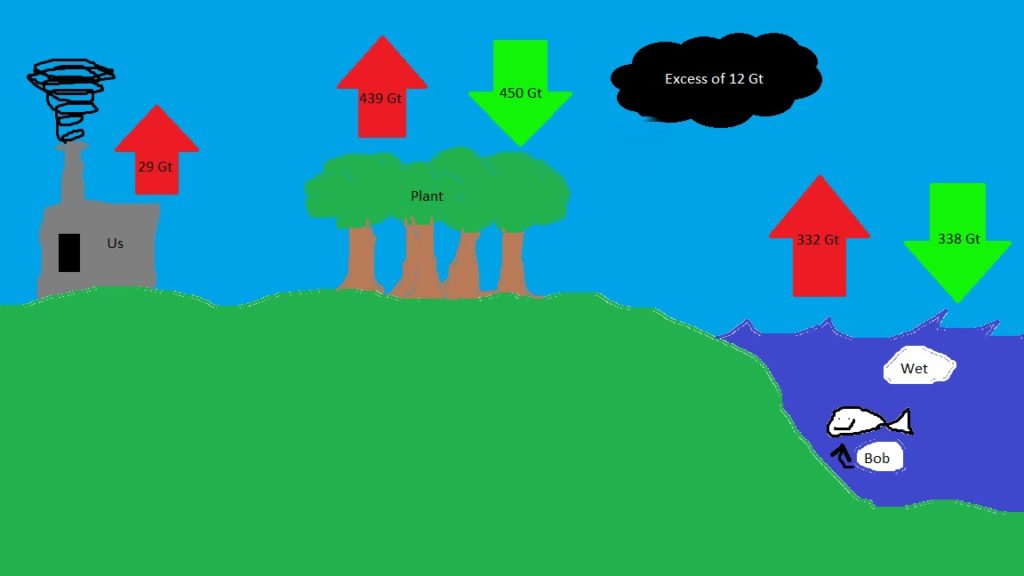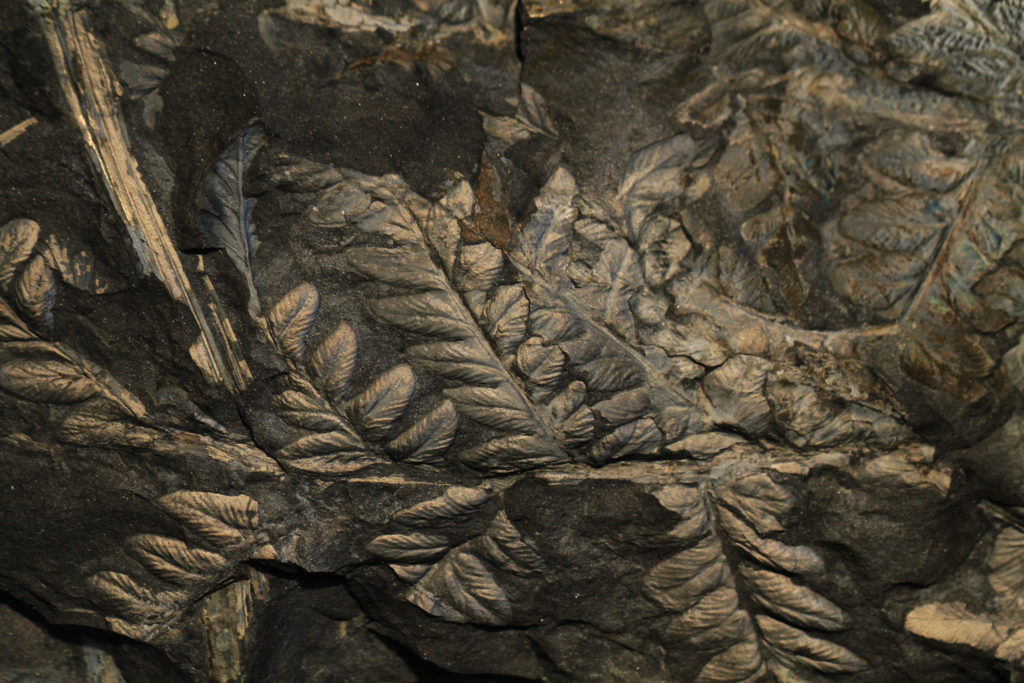Par the course, I’m going to start off with a hypothetical: You and your friend are talking about the military and your friend lets slip that they think women have no place in the infantry because men are typically stronger, larger, etc. This sparks a debate between the two of you about women having just as much right to serve as infantry, how physical attributes are not the only thing at stake, and so on. Now imagine your friend giving you the “nope, you’re wrong” treatment as you explain that strategy in an infantry setting is more important than strength. Naturally this would either result in an increase in volume or shut the conversation off completely. Nobody wins. Nobody is happy.

Now, imagine they instead conceded that they admire the nobility of any person, man, woman, or otherwise that would offer their life for their country and that they agree strategy is more important in most infantry situations, but that in circumstances when weapons hit the ground and the knives and fists come out that the larger and stronger being is likely going to come out on top. This, I think is a more constructive conversation, and the two of you are more likely to debate topics which you may disagree on in the future. You or your friend may even come out with a changed perspective having learned something.
This is one of the biggest problems facing discussion on climate science. People coming at the issue from either side are so encamped in their position that they can’t but default to some more or less sophisticated variation of the “nope, you’re wrong”. Even if they’ve perused the data, they’ve likely only seen what confirms what they think.
Perhaps I’m idealistic, but I think that most people operate on some level of rationality and inherent goodness. I am someone who was very deeply bunkered in my “save the planet” perspective, but when looking into the climate change skeptical side of things, even though I am still of the opinion that climate change is THE fatal threat and will make that clear in this post, I see that deniers are not without good reason.
Similar to those who acknowledge climate dangers, there are many people on denial’s side with emotional or politic-aligning purposes more than substantial basis to what they believe and shout. But much like the climate change believers, deniers have a base of well-informed advocates. I can’t speak as to the intentions of the advocates on either side, but I digress.
My purpose with this opening is not to state which side you should believe, rather it is to explain that having genuinely open minds to others’ positions and acknowledging that they operate on some level of rationality is how we move an issue forward in the way best for everyone: an ally will compromise more readily than an enemy. Preachy as all this sounds, people on the opposite side feel about you the way you feel about them.
Before We Get Into It
In this post I intend to present the relevant information that I have found on climate change, skeptic arguments I could find against the validity of that information, and any plausible explanation from climate-change believers. I won’t talk about climate change solutions; maybe in a future post. Much of the skeptical perspective addresses the reliability of the people reporting climate change science. I began to look into the politics and bureaucratic corruption proposed by skeptics that I heard, but every line just runs too deep and you will never know truly if or how drastic data was manipulated, excluded, or whatever else.
Though important, I will not speak to any of corruption or manipulation of data in this post, rather, if it is something which interests you, I suggest you watch the video below from the Truth Factory as well as anything in the skeptic section of my references and make sure to backcheck claims made in them. The Truth Factory is, however, known for spreading far-right conspiracies. Most of what I checked from this video has a reasonable explanation; this video is, to me, most valuable for seeing how someone skeptical about climate change could have a rational (even if warped) basis for what they believe.
An Overview of Our Situation
The basic idea of global warming is that light from the sun becomes trapped in greenhouse gases (GHGs) in our atmosphere in the form of heat/infrared light after reflecting back off of Earth and that this effect will only become greater as the concentration of GHGs in the atmosphere increases. Current models put the average annual temperature increase since 1981 at 0.32°F per decade (climate.gov of the NOAA). The primary culprit for this effect is someone we’re all familiar with. The infamous Carbon Dioxide (CO2), right? You know CO2, the gas that we exhale after breathing in Oxygen (O2)? That’s right, YOU breathing is causing global warming. Thanks for that.

But no, the most potent GHG warming effect actually comes from water vapor. It exists in abundance beyond any other GHG and is an effective GHG (NOAA.gov). The reason that CO2 gets most of the flak is because it is the second-most abundant and the amount of water vapor in the atmosphere increases in a feedback loop with warming that it and other GHGs cause; as the temperature rises from CO2 contributing to warming, more water evaporates warming further and exacerbating the problem. Though there are other GHGs at play, CO2 will be what I focus on for this post as it comprises 81% of GHG emissions (EPA.gov).
A Boiling Pot
This warming also leads to a rising sea level by melting ice and the thermal expansion of oceans. According to NASA.gov, the sea level has been rising anywhere between 0.5 to 3.1 millimeters per year over the last 70 years, leaning closer to 3.1 mm per year since 1993. Regarding the polar bears, around 750 billion tons of ice are melting yearly (theworldcounts.com via multiple sources). As Joe from “It’s Okay To Be Smart” explains, as the ice melts, the surface of the planet is covered less by white ice which can reflect sunlight and more by dark oceans which absorb it as heat.
So, more ocean space, more space for CO2 to be absorbed, right? Yes, but CO2 solubility in seawater decreases as temperature increases, as expressed by Heng et al. (1996). Further, even if more CO2 can be stored in the oceans, it doesn’t do anything to rectify the temperature increase, especially considering the increase in water evaporation that accompanies higher temperatures.
When the oceans are more saturated with CO2 their pH decreases, meaning they are more acidic. Organisms like crabs, mollusks, and coral are what’re known as calcifying organisms. These organisms’ shells are made from calcium carbonate, a compound that is stable in ocean waters that are supersaturated with carbonate (CO32−). As pH in ocean waters falls, so too does CO32− saturation leading to the dissolution and death of these calcifying organisms which serve as food for many people and other animals in their ecosystems.

Our Debt
As I joked about before, breathing does emit CO2, but a very small amount per individual human. Over the course of a day, you will release around 2.3 lbs of it (EPA.gov). This is part of the roughly 29 gigatons (Gt) of CO2 that all human activity produces every year (skepticalscience.com via the IPCC’s AR4). A single gigaton is 2.2046 trillion pounds to put that in perspective. That massive amount of CO2 is the result of burning fossil fuels, animal farming, land use, and various other industrial processes.
Not all of the CO2 we put in the atmosphere just hangs around, though. In fact, anthropogenic (human created) CO2 is only a small portion of the total CO2 released globally every year (~800 gigatons). The Earth has natural carbon sinks in the form of soil, plants, and the ocean which absorb and recycle that CO2. According to that same figure from IPCC’s AR4, vegetation and land release 429 Gt and absorb 450 Gt, oceans release 332 Gt and absorb 338 Gt every year. With my usual mathematical proficiency, I was able to deduce that we have an excess production of ~12 Gt of CO2 annually.

This is, as skeptics will tell you, is such a small amount compared to that massive ~800 Gt in circulation annually. The problem is that ~12 Gt of that isn’t recycled like the rest. “Well more CO2 increases the photosynthesis and respiration rates of plants, which will lead to plant growth and thus more CO2 recycling” they might respond. This point is fact. More CO2 does have a fertilizing effect, and more plants means more CO2 recycling.
The issue here is that this only happens initially. As CO2 warms the atmosphere, this reduces moisture available in soils for plants over the course of the seasons (Green et al., 2019). In a convoluted feedback loop, temperature increase causes plants to need to respirate more to produce the same amount of energy, consuming more CO2 but also requiring more water, which dries the soil, which increases the temperature further. It is essentially that plants exceed the carrying capacity of their ecosystem while also decreasing that carrying capacity. Once this is done plants then absorb less CO2 overall because there are fewer of them, and thus there is even more CO2 exacerbating the issue.
How Bad is 12 Gt?
The World Meteorological Organization’s 2019 GHG bulletin put current (2018) measurements of CO2 saturation in the atmosphere at ~407 parts per million (ppm) and that number has been increasing at an average of 2.26 ppm every year over the last decade. What this means is that for every million gas molecules in our atmosphere, around 407 of those are CO2.
You might think 407/1,000,000 doesn’t sound so bad until you compare it against the 278 ppm from before the Industrial Revolution (around 1750) when anthropogenic CO2 emissions exploded. CO2 concentration for all of Earth’s history had not exceeded 280 ppm until this point (NOAA.gov). According to the WMO GHG Bulletin from 2018, this 278 ppm represented a balance between atmospheric, ocean, and land biosphere CO2 sinks and sources.

Another line of skeptic arguing is that we can’t be sure that the excess CO2 is of human creation. The reason we can conclude that it is is because of the ratio of carbon-12 (12C) to carbon-13 (13C) isotopes in atmospheric CO2. As Joe from “It’s Okay To Be Smart” explains, plants, which make up most of our sources of fossil fuels prefer the lighter 12C to 13C for respiration, so as we burn fossil fuels composed primarily of plants we should see greater 12C numbers, which is exactly what’s happening.
Is the Planet on Fire?

It doesn’t much matter how saturated the atmosphere is with CO2, rather the warming that that CO2 produces. The five warmest years since 1880 have all occurred in the past five, all despite declining solar activity of solar cycle 24 (NOAA.gov).
Something skeptics on the issue bring up is that data on global temperature change is unreliable because of increasing urbanization and that temperature reading stations near buildings or air conditioning units are warping their readings. A study by Leeper et al. (2019) found just that. By placing temperature reading stations various distances from an urbanized area, temperatures read nearer to the urbanized area were up to 0.47°C warmer at certain points of the day.
This issue is mostly rectified, as explained in Hansen et al. (2001) by adjusting urban site temperature data in relation to temperature trends from more reliable nearby rural sites. Even if this is not a sure-fire method for adjusting temperature readings, the global records use a massive number of sites’ readings for the data. I couldn’t find an exact number globally, and I’m sure the US is more saturated with sites than most places, but the NOAA uses over 1,200 sites for temperature reading in the US alone (NOAA.gov).
Substantial, and particularly continued warming brings a host of problems for all life on Earth. Just some of the issues listed in an IPCC Special Report are food shortages, extreme weather events, decreased habitable zones for certain animal life, disruption of marine ecosystems, ice melting, and many more. The different GHGs can remain in the atmosphere anywhere from a few years to a few thousand years (EPA.gov).
Take-Aways
Something that I realized while researching all of this is that this debate resembles the evolution/creation debate in a lot of ways. Like evolution, climate change can’t be proven per se; then again, neither can anything. The scale of things needed to effectively prove it beyond any doubt is just too great for science as it exists today. It is the most solid logical conclusion available to us, and it is very sound. We’ve done so much to substantiate our claims and our predictions often line up with reality.
A gas which has been proven to absorb and emit infrared radiation becoming significantly more saturated in the atmosphere relative to human activity at the same time temperatures are rising and solar activity is falling is the logical and evident culprit for such consequences. The only real leg to stand on that skeptics have seems to be questioning the validity and integrity of what is reported and directing the question to how vast and unpredictable global climate is. Science only ever does its best to direct us to what is probably happening, never what must be happening. Doubt is not proof.
In my opinion, even considering the possibility that our emissions are not harmful and that the planet will manage, against all odds, to compensate for our massive CO2 production, the risk of not changing our behaviors greatly outweighs the costs of reform.
Below I will have the skeptical sources I looked at. If you look into them yourself and wish to discuss their validity or any counter arguments I found, you can contact me or comment below.
For the next post, I thought I’d ask what you guys would like to see. Here’s a survey you can take if you’d like to see something specific from me next: https://www.surveymonkey.com/r/ZGPHY8Y
As always, thanks for reading.
References:
- Chatterjee, A., Gierach, M. M., Sutton, A. J., Feely, R. A., Crisp, D., Eldering, A., … Schimel, D. S. (2017). Influence of El Niño on atmospheric CO2over the tropical Pacific Ocean: Findings from NASA’s OCO-2 mission. Science, 358(6360). doi: 10.1126/science.aam5776
- Doran, P. T., & Zimmerman, M. K. (2009). Examining the Scientific Consensus on Climate Change. Eos, Transactions American Geophysical Union, 90(3), 22. doi: 10.1029/2009eo030002
- Green, J. K., Seneviratne, S. I., Berg, A. M., Findell, K. L., Hagemann, S., Lawrence, D. M., & Gentine, P. (2019). Large influence of soil moisture on long-term terrestrial carbon uptake. Nature, 565(7740), 476–479. doi: 10.1038/s41586-018-0848-x
- Hansen, J., Ruedy, R., Sato, M., Imhoff, M., Lawrence, W., Easterling, D., … Karl, T. (2001). A closer look at United States and global surface temperature change. Journal of Geophysical Research: Atmospheres, 106(D20), 23947–23963. doi: 10.1029/2001jd000354
- Lean, J. L. (2009). Cycles and trends in solar irradiance and climate. Wiley Interdisciplinary Reviews: Climate Change, 1(1), 111–122. doi: 10.1002/wcc.18
- Leeper, R. D., Kochendorfer, J., Henderson, T. A., & Palecki, M. A. (2019). Impacts of Small-Scale Urban Encroachment on Air Temperature Observations. Journal of Applied Meteorology and Climatology, 58(6), 1369–1380. doi: 10.1175/jamc-d-19-0002.1
- Modak, A., Bala, G., Cao, L., & Caldeira, K. (2016). Why must a solar forcing be larger than a CO 2 forcing to cause the same global mean surface temperature change? Environmental Research Letters, 11(4). doi: 10.1088/1748-9326/11/4/044013
- Ries, J. B., Cohen, A. L., & Mccorkle, D. C. (2009). Marine calcifiers exhibit mixed responses to CO2-induced ocean acidification. Geology, 37(12), 1131–1134. doi: 10.1130/g30210a.1
- Teng, H., Masutani, S., Kinoshita, C., & Nihous, G. (1996). Solubility of CO2 in the ocean and its effect on CO2 dissolution. Energy Conversion and Management, 37(6-8), 1029–1038. doi: 10.1016/0196-8904(95)00294-4
- https://www.climate.gov/news-features/understanding-climate/climate-change-global-temperature
- https://www.climate.gov/news-features/understanding-climate/climate-change-atmospheric-carbon-dioxide
- https://climate.nasa.gov/news/2436/co2-is-making-earth-greenerfor-now/
- https://climate.nasa.gov/climate_resources/189/graphic-temperature-vs-solar-activity/
- https://climate.nasa.gov/faq/17/do-scientists-agree-on-climate-change/
- https://climate.nasa.gov/vital-signs/ice-sheets/
- https://www.epa.gov/ghgemissions/overview-greenhouse-gases
- https://www.ipcc.ch/sr15/
- https://www.jpl.nasa.gov/news/news.php?feature=4769
- https://library.wmo.int/doc_num.php?explnum_id=10100 (GHG Bulletin 2018)
- https://library.wmo.int/doc_num.php?explnum_id=10100 (GHG Bulletin 2019)
- https://www.ncdc.noaa.gov/sotc/global/201913
- https://www.ncdc.noaa.gov/monitoring-references/faq/temperature-monitoring.php
- http://www.realclimate.org/index.php/archives/2004/12/how-do-we-know-that-recent-cosub2sub-increases-are-due-to-human-activities-updated/
- http://www.realclimate.org/index.php/archives/2004/12/myths-vs-fact-regarding-the-hockey-stick/
- https://skepticalscience.com/surface-temperature-measurements-intermediate.htm
- https://www.skepticalscience.com/co2-residence-time.htm
- https://skepticalscience.com/human-co2-smaller-than-natural-emissions.htm
- https://sos.noaa.gov/datasets/el-nino-and-la-nina-seasonal-impacts/#:~:text=The%20opposite%20of%20El%20Nino,cause%20changes%20in%20the%20atmosphere.&text=During%20the%20summer%2C%20El%20Nino,the%20middle%20of%20the%20Pacific.
- https://www.weather.gov/news/190504-sun-activity-in-solar-cycle
- https://www.youtube.com/watch?v=EtW2rrLHs08
- https://www.youtube.com/watch?v=ffjIyms1BX4&t=
Skeptic References:
- Beenstock, M., Reingewertz, Y., & Paldor, N. (2012). Polynomial cointegration tests of anthropogenic impact on global warming. Earth System Dynamics, 3(2), 173–188. doi: 10.5194/esd-3-173-2012
- https://friendsofscience.org/assets/documents/97_Consensus_Myth.pdf
- http://hockeyschtick.blogspot.com/2010/06/ipcc-consensus-on-solar-influence-was.html
- https://www.youtube.com/watch?v=UmIJCGQzCiU&t=
- https://www.youtube.com/watch?v=tAELGs1kKsQ&t=
- https://www.youtube.com/watch?v=tm_0-xSv-v4&t=1s
- https://www.youtube.com/watch?v=Tx-Zmjzv_EQ